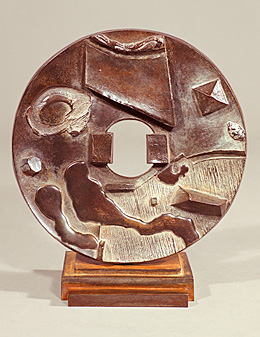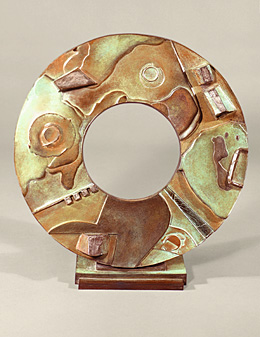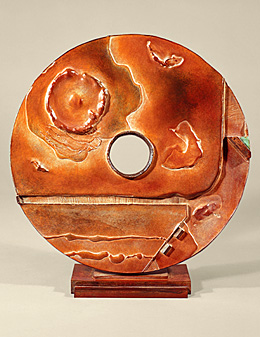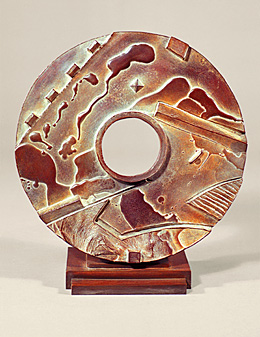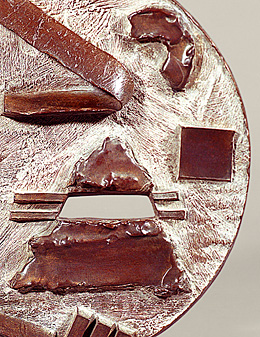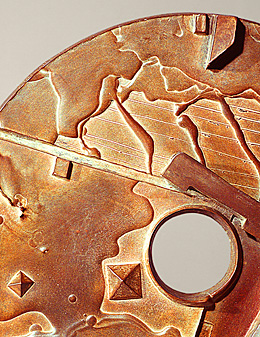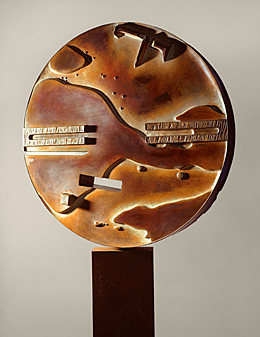|
|
|
|
|
|
|
|
|
|
|||||||||||||||
|
|
|||||||||||||||||||||||
“Bronze Landscapes” June 11 – Sept. 10, 1997
|
|||||||||||||||||||||||
“There is no there there.” That’s Gertrude Stein’s rather infamous description of Oakland, California where she spent her apparently dreary childhood, and where a century later I had my studio from 1989 to 1995. I had better luck and flourished, nevertheless I could utter the same mantra she did as I look back upon of my series of bronze reliefs called Metaphysical Landscapes. They may be topographical, but there is no there there. The poetic notion that a person has a “flight of imagination” is appropriate to the study of my flying saucers. These circular discs can be approached from a number of viewpoints, but on first glance it’s apparent the perspective is aerial. I’ve been living in San Francisco since 1972 and I frequently fly over the American West on my way to New York. Of course I always ask for a window seat. Through that round porthole I never tire of watching the fluctuating dramatic topography. Landscape is one of the great themes of painting, but it is not often relished as a subject for sculpture. I took that inhibition as a challenge. In translating landscape into bronze keep in mind I’m not out to copy a well-known terrain as a painter might. With me the question of where is archetypal rather than specific. And the question of why is metaphysical. Metaphysics has been described as that “branch of philosophy that systematically investigates the nature of first principles and problems of ultimate reality.” This includes the study of being as well as the very structure of the universe. It is given to speculation and abstraction. I create terrains and vistas just as nature does over time. What the God of the Bible did in a week I also do in days. They are what they are: islands, hills, mountains, valleys, riverbeds, plateaus and mesas as well as craters made by falling meteors. You can also pick out the human elements in architectural details such as pylons, pyramids and canals. After all is said and done they’re each meant to be studied and probed in that silent way a Zen monk contemplates the moon. Taken in another context people have told me the round shape of the disc format reminds them of old Chinese coins with their cutout circles and squares. As a boy I was an avid collector of coins and I really consider it my introduction into the sculptural use of relief. As a man I became acquainted with the jade antecedents of my Chinese coins. In Chinese mythology the ‘bi’ shape, that is a flat disc with an opening in the center, is considered to be a sky or sun symbol associated with the heavens. Perhaps my windows on the world have heavenly connections or ideals. The Metaphysical Poets of the 17th century were fond of elaborate conceits. Think of my bronzes this way: a square sits but a circle moves since circles are eternal with neither a beginning nor an end. If your imagination can fly, you now have a destination. You see I really live just over the horizon. Exploration is what the eye is designed to do, and should you care to meet me, that will do for a why and one of my bronze landscapes will do for the where. |
|
||||||||||||||||||||||
|
|||||||||||||||||||||||
